6 Most Memorable Racing Gear Designs in Motorsport
Racing gear has come a long way in the world of motorsports, evolving from basic protective equipment to sophisticated, high-tech suits designed not only for safety but also for performance optimization and brand representation. For drivers, every race is a battle against time, with gear playing a crucial role in ensuring that they can perform at their peak while staying safe. From early racing suits to modern designs filled with sensors and specialized materials, racing gear has become as much about technology and innovation as it is about the race itself.
The Role of Racing Gear in Driver Safety and Performance
In the early days of motorsports, safety was a secondary consideration, with drivers often relying on basic leather or wool suits for protection. Today, racing gear is designed to provide ultimate safety while enhancing driver performance. Fire-resistant materials, such as Nomex, offer vital protection from fire hazards, and high-tech fabrics keep drivers comfortable by regulating their body temperature, allowing them to focus entirely on the race.
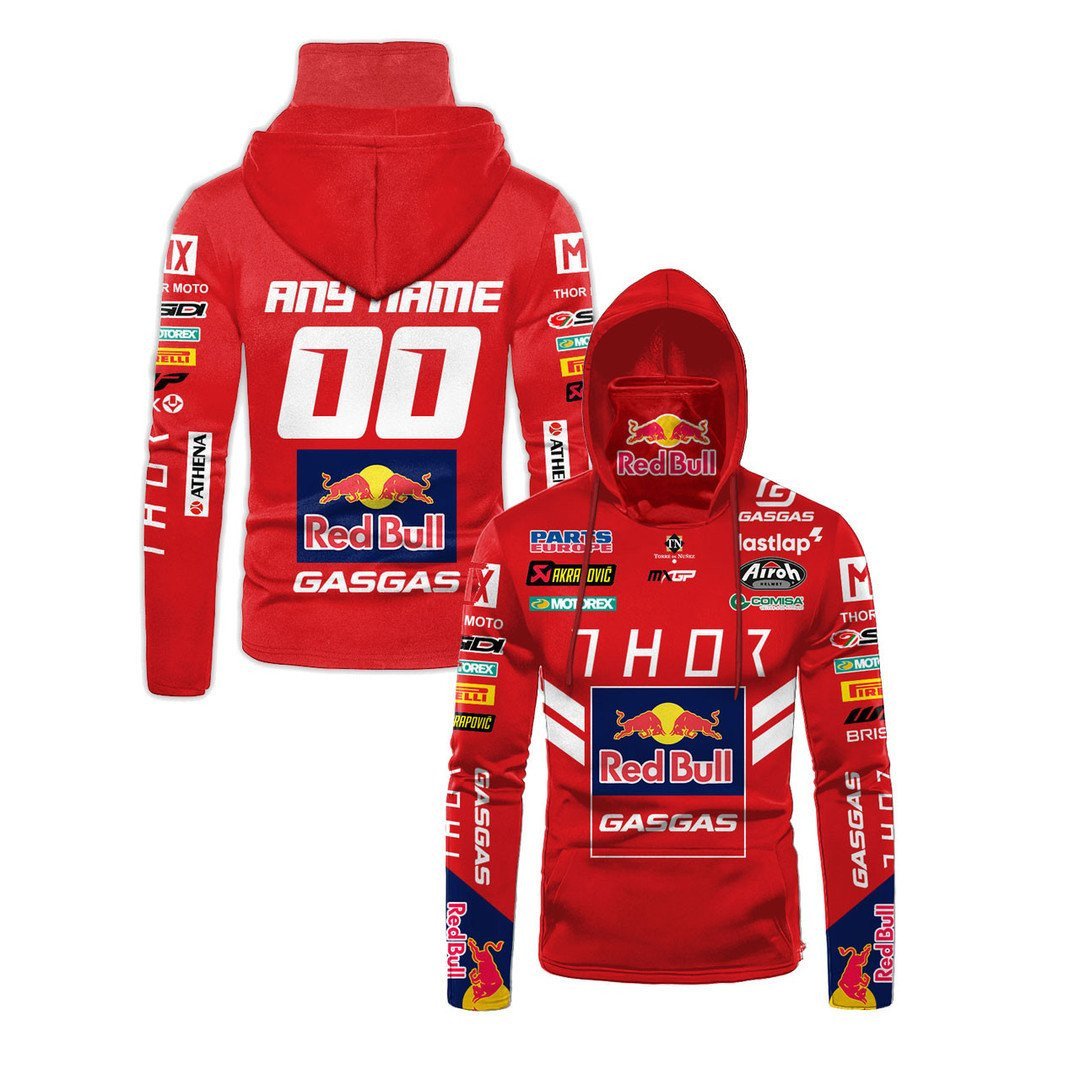
Modern F1 racing suits like this one from Kartex Suits offer ultimate protection and performance, utilizing advanced fire-resistant materials and custom designs tailored for drivers' needs.
How Racing Gear Reflects the Evolution of Motorsport Technology
The design of racing gear has evolved as rapidly as the technology in the cars themselves. In the 1920s to 1950s, racing suits were simple and offered minimal protection, often made from wool or leather. As car technology advanced, so did the gear. By the 1970s, the introduction of fire-resistant materials like Nomex revolutionized the industry, allowing drivers to race with more confidence in their protection. In the 1990s, high-tech materials like Kevlar and carbon fiber were introduced to further enhance protection while reducing weight, and today, smart racing gear is being developed to gather data on a driver’s performance.
Caption: MotoGP racing suits, such as this one worn by Jorge Martin, incorporate Kevlar and carbon fiber for a lightweight yet highly protective design, reflecting advancements in motorsport technology.
The Influence of Motorsport Culture on Gear Design
Racing gear has also become a reflection of the culture within motorsports. As sponsorships grew throughout the 1970s and beyond, racing suits became an essential platform for team branding, with logos of major sponsors prominently displayed on every part of the suit. Beyond the functional role of safety, racing gear became a symbol of a team’s identity and pride, influencing both the driver’s personal style and the larger culture of motorsport.
For instance, fans of Monster Jam often sport racing gear designs that are bold and colorful, a reflection of the high-energy, extreme nature of the sport. The heavy-duty designs, often seen at live events, reflect the powerful machines and thrilling stunts that define Monster Jam.
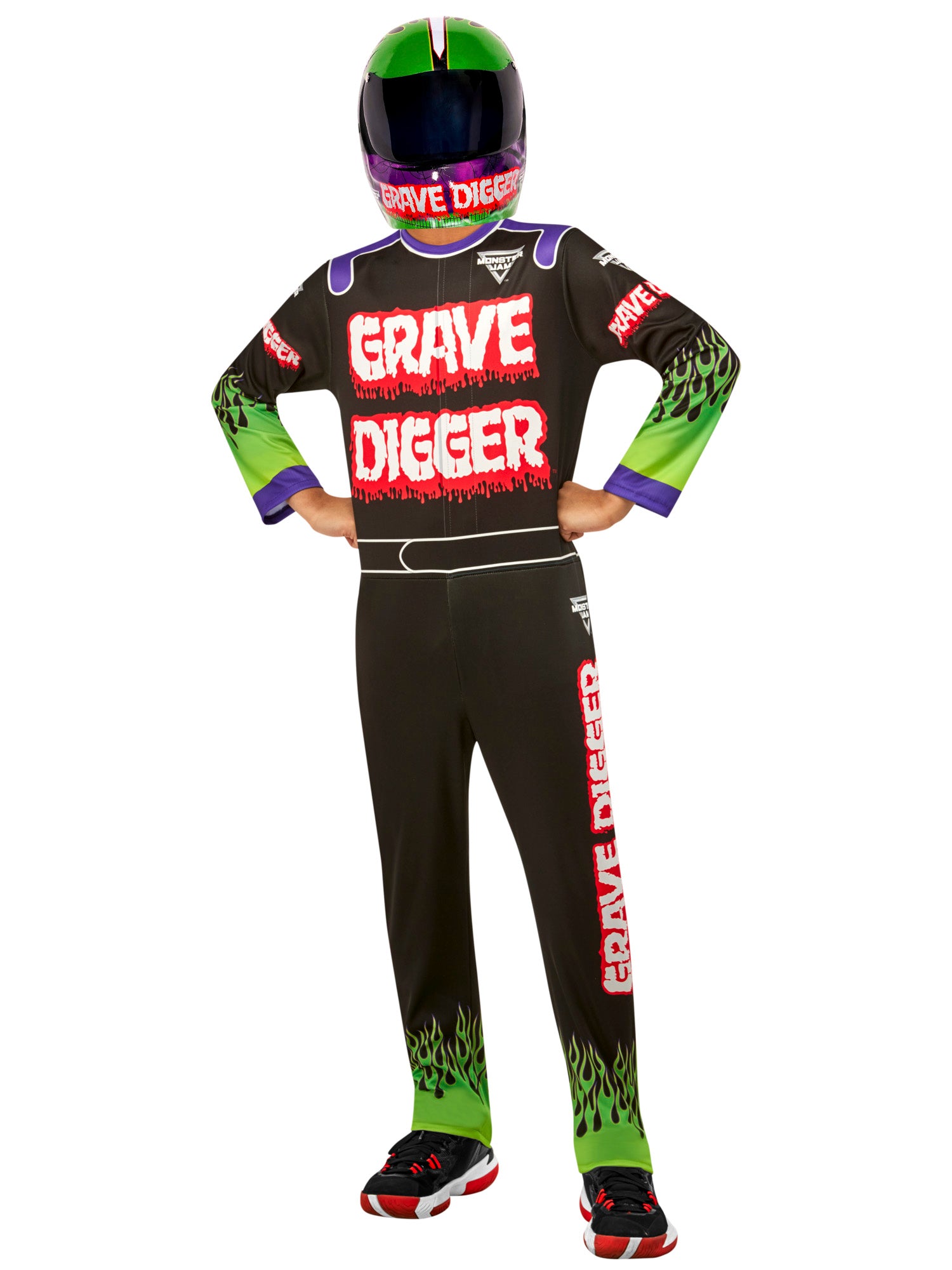
Custom Monster Jam costumes, like the one shown here, are designed to capture the bold spirit of the sport, representing both the driver’s persona and the intense spectacle of the event.
1. The Early Days: Basic Racing Gear Designs
Racing Suits of the 1920s-1950s: Simplicity and Safety
The early years of racing gear were focused on basic protection, with drivers wearing wool or leather suits that provided some degree of coverage but little else in terms of safety features. In this era, the priority was simply shielding the driver from abrasions and weather conditions, as car speeds were not as high as they are today. As a result, early designs lacked the sophisticated materials we see in modern suits.
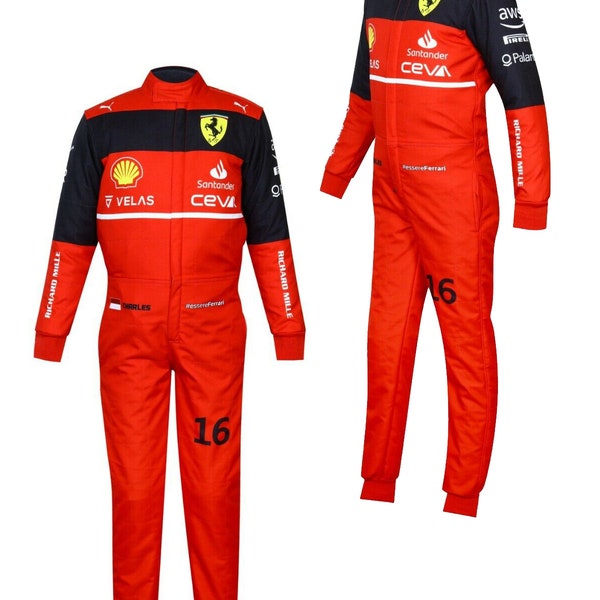
Early racing suits, like the one shown here, were simple in design, with minimal protective features compared to modern suits.
Limited Branding and Basic Safety Features
Back in the early days, branding and sponsorship were not as pervasive in motorsports as they are today. Racing suits often bore little to no logos, and the focus was more on functionality than commercial appeal. Safety features were rudimentary at best, with helmets and gloves being some of the only protective gear drivers had at their disposal.

Early racing costumes, like this one designed for Monster Jam, were often basic with minimal branding, focusing more on the safety aspect of the suit.
The First Innovations in Material and Design for Driver Protection
The introduction of fire-resistant materials in the 1970s was a major turning point in racing gear design. Nomex, a heat- and flame-resistant fabric, became a standard in racing suits, offering drivers much-needed protection in case of fire. The shift to synthetic, fire-resistant materials marked the beginning of a new era in racing safety and gear innovation.
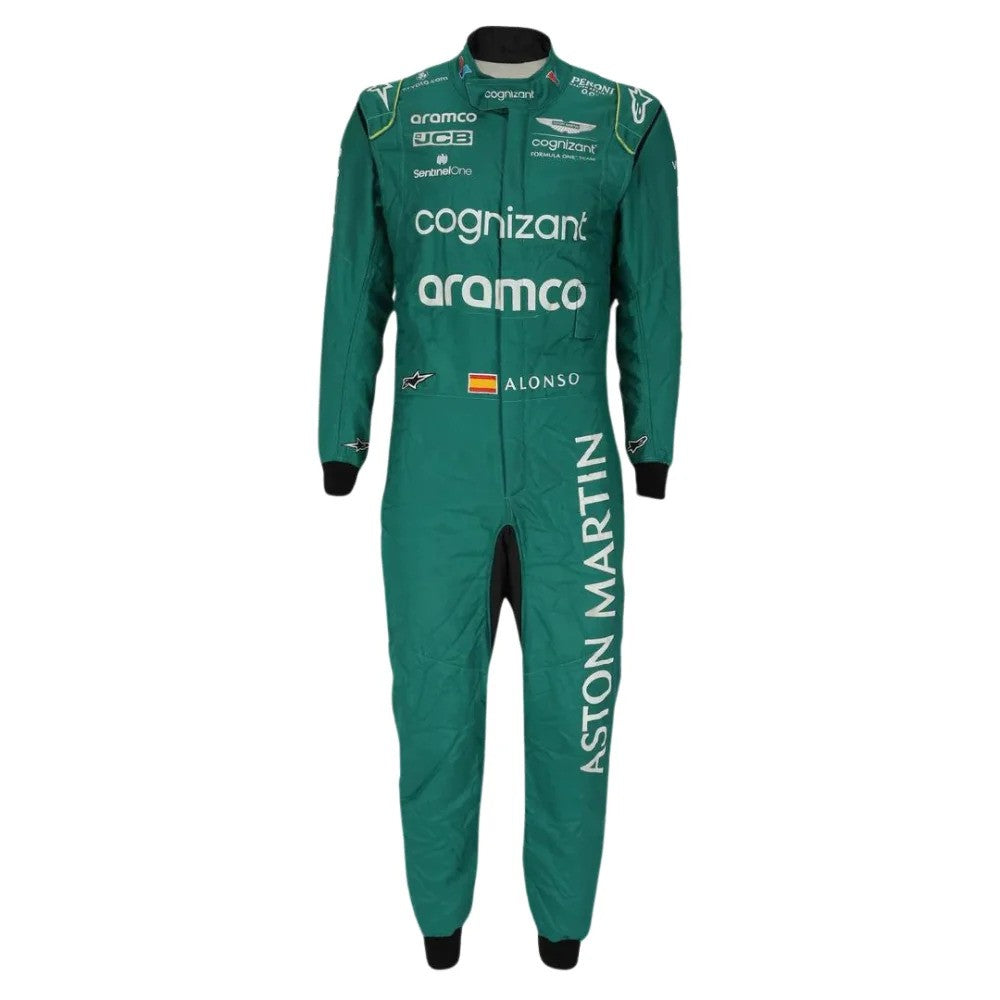
The introduction of fire-resistant materials like Nomex revolutionized racing suit designs, as shown in this modern F1 racing suit from Kartex Suits.
This approach provides a detailed narrative on the evolution of racing gear, showing how its design has both protected drivers and influenced the culture of motorsport. The inclusion of images helps bring the history and innovation of racing gear to life, making the article both informative and visually engaging.
2. The 1970s: The Era of Bold Designs and Material Advancements
Introduction of Fire-Resistant Materials like Nomex
By the 1970s, the dangers associated with high-speed racing prompted manufacturers to introduce fire-resistant materials, which became a game-changer for driver safety. Nomex, a flame-retardant fabric, was integrated into racing suits to protect drivers in the event of fire, a crucial safety feature given the high risk of accidents and vehicle fires. This innovation not only saved lives but also set the foundation for further advancements in racing gear technology.

The introduction of fire-resistant Nomex fabric, seen in this modern F1 racing suit from Kartex Suits, marked a significant milestone in driver safety during the 1970s.
Branding Takes Over: The Rise of Sponsorship Logos
As motorsport grew in popularity and commercial sponsorships flourished, racing suits began to transform into vibrant canvases for corporate logos and brand names. During the 1970s, the increased presence of sponsors meant that driver suits became adorned with a multitude of logos, a trend that continues today. This was a crucial period for motorsport, as the integration of branding into gear signaled the commercialization and global reach of the sport.
The Ferrari F1 racing suit, as shown in this Etsy costume, reflects the era's focus on sponsorship logos, a trend that continues to define modern racing attire.
Enhanced Comfort and Durability for Drivers During Races
In addition to safety and branding, comfort became a key factor in the design of racing suits. With the increasing intensity of races, drivers required gear that allowed for freedom of movement while still providing the necessary protection. Racing suits were designed with additional padding and improved stitching to enhance comfort, ensuring drivers could perform at their best without being hindered by bulky or stiff clothing.
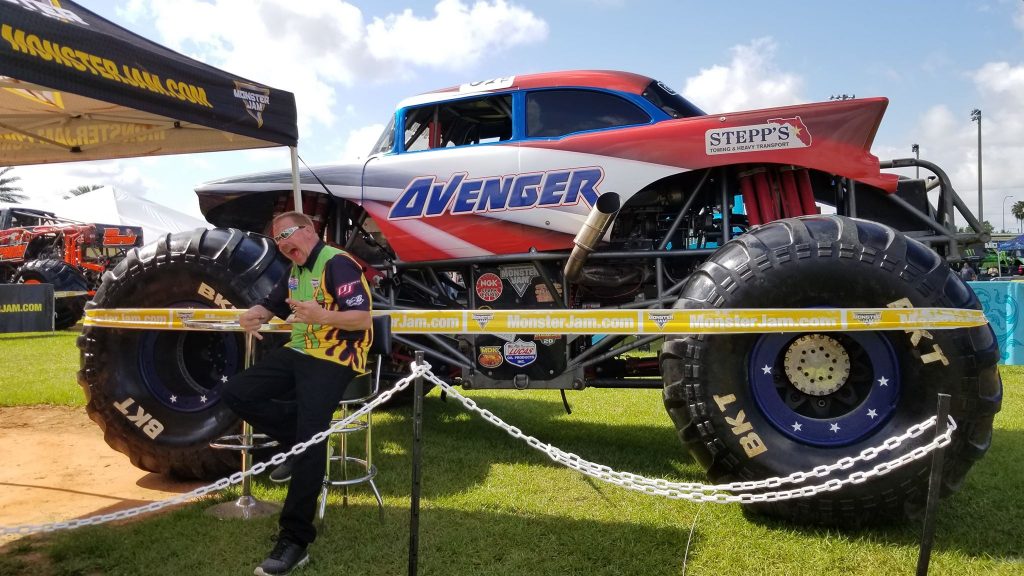
Monster Jam racing costumes like this one showcase the bold and durable designs of racing gear from the 1970s, prioritizing both comfort and safety.
3. The 1990s: High-Tech Materials and Customization
The Advent of Kevlar and Carbon Fiber in Racing Gear
The 1990s ushered in a new era of advanced materials in racing gear. Kevlar and carbon fiber became popular choices for creating lightweight, durable, and protective gear. These materials, originally developed for military and aerospace applications, provided superior strength and fire resistance, allowing racing suits to offer more protection without adding unnecessary weight. The use of these high-tech fabrics marked a significant leap forward in the evolution of motorsport safety.

The use of Kevlar and carbon fiber in MotoGP racing suits, like the one shown here, significantly improved driver safety while enhancing performance.
Customizable Racing Suits for Professional Drivers
Customization became a key feature in the 1990s, with professional drivers now able to have racing suits tailored to their exact measurements and personal preferences. Custom designs were not only a way for drivers to ensure comfort but also an opportunity to showcase their team colors and personal branding. This period saw the rise of personalized suits, with drivers opting for unique designs that reflected their style, sponsor partnerships, and national pride.

Customizable MotoGP suits, like this one worn by Alex Marquez, showcase the personalization trend of the 1990s, allowing drivers to reflect their individual style and sponsorship deals.
Aerodynamic Enhancements for Performance Optimization
As racing technology advanced, so did the need for aerodynamic improvements in gear. Racing suits were designed to reduce drag and allow for greater mobility, ensuring drivers could maintain peak performance during high-speed races. Features such as form-fitting designs, aerodynamic cuts, and specialized stitching helped improve the driver’s posture, contributing to faster lap times and enhanced agility.

MotoGP racing suits, like this one worn by Jorge Martin, are designed with aerodynamic elements to optimize driver performance during high-speed races.
4. Modern Racing Gear: Technology Meets Innovation
The Introduction of Smart Racing Gear with Sensors and Data Integration
In recent years, racing gear has embraced cutting-edge technology. Smart racing suits with integrated sensors are now able to monitor a driver’s physical condition during a race. These suits collect data on heart rate, body temperature, and even stress levels, which is transmitted to the team in real-time. This data allows teams to make informed decisions about a driver’s well-being and performance, marking a significant advancement in both safety and strategy.
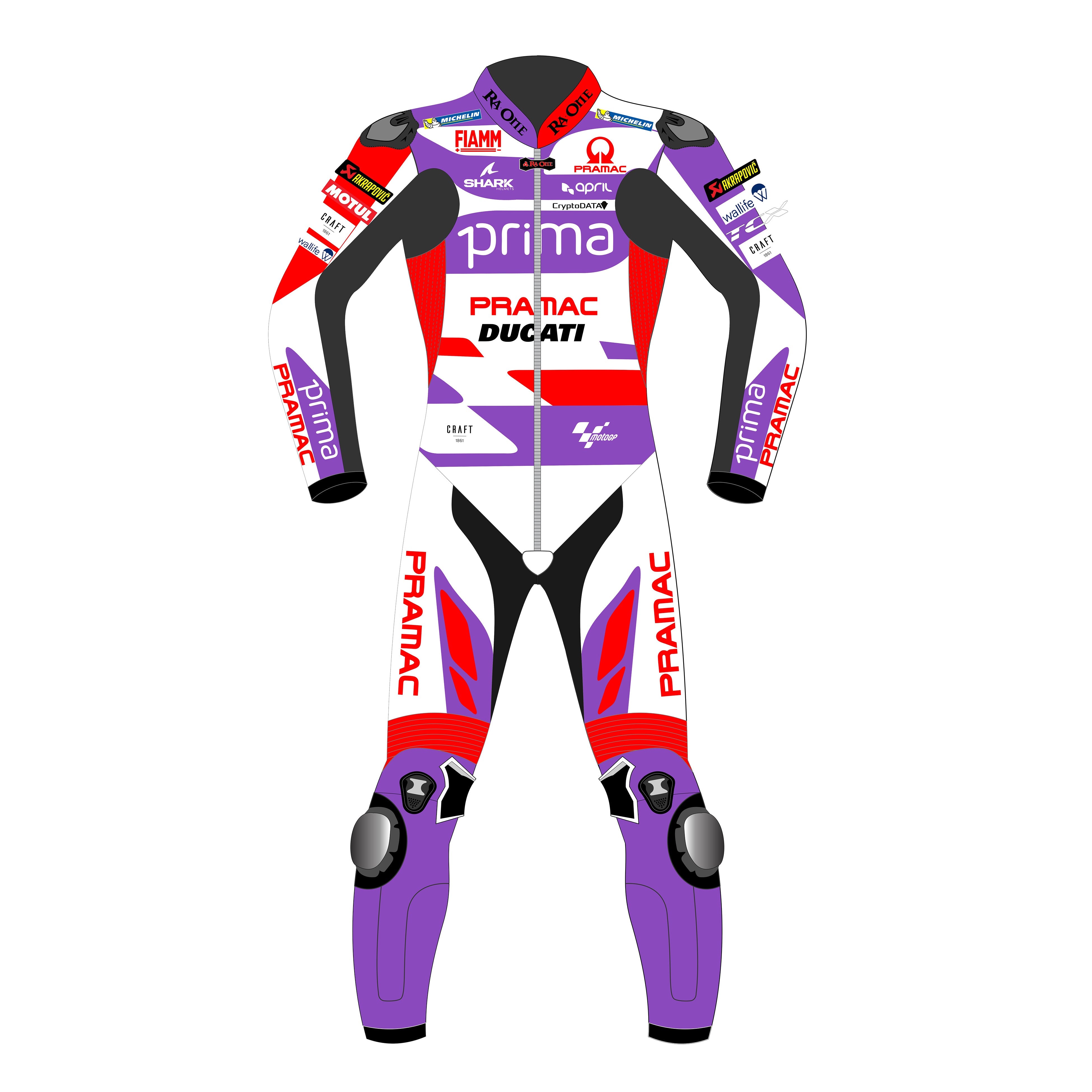
Modern F1 racing suits, like the one shown here, integrate advanced sensors to track driver performance and health, reflecting the latest in wearable technology.
Lightweight, Temperature-Regulating, and Fire-Resistant Fabrics
Today's racing gear is engineered with lightweight, temperature-regulating, and fire-resistant fabrics, offering maximum protection while allowing for optimal comfort. Materials such as Nomex are combined with cooling technologies to help maintain the driver’s core temperature, preventing overheating during long and intense races. These innovations ensure that drivers can focus solely on their performance, without worrying about external factors.
Evolution of Design: From Functional to Fashionable
Modern racing gear no longer focuses solely on function but also incorporates elements of style and fashion. With sponsorships, team colors, and even personal branding playing an essential role, racing suits have become a symbol of identity both on and off the track. The design of racing gear is now as much about showcasing the driver’s personality and team pride as it is about ensuring safety and comfort.
5. Iconic F1 Racing Gear Designs
The Red Ferrari Racing Suits: A Legacy of Speed and Elegance
Few designs in motorsport are as iconic as the Ferrari F1 racing suits. These red suits have become synonymous with speed, luxury, and excellence in motorsport. The combination of Ferrari’s racing legacy and the functional, stylish design of the suits makes them a standout in F1 history. The integration of sponsor logos and personalized elements further elevates the prestige associated with these suits.
The Role of F1 Racing Gear in Driver and Team Identity
F1 racing gear serves as a critical element in shaping the identity of both the driver and the team. The suits reflect the values, legacy, and sponsorships of the team, acting as both protective clothing and a branding tool. A driver’s suit can often tell a story of their career, their allegiance to a particular team, and the evolution of the sport itself.
Technological Innovations in F1 Gear for Driver Protection
F1 gear has constantly evolved to ensure driver safety. Innovations such as the HANS (Head and Neck Support) device, integrated into many racing suits, have become mandatory in modern F1 racing, helping to protect the driver from neck injuries during crashes. As safety concerns grow, so do the technologies used in racing gear, making F1 one of the most technologically advanced sports in the world.
6. NASCAR: The Blue Collar Approach to Racing Gear
NASCAR Suits: Durability and Functionality Above All
Unlike the flashy, brand-heavy designs seen in F1, NASCAR racing suits emphasize durability and functionality. These suits are built to withstand the tough, rough nature of stock car racing, where impacts and long, grueling races are common. The focus is on ensuring that drivers can perform under harsh conditions while remaining protected and comfortable.
Incorporating Practical Features for Long Races and Heat Resistance
Given the intensity of NASCAR races, where drivers are often in the car for hours at a time, NASCAR suits are designed to provide enhanced comfort, heat resistance, and practicality. Features such as breathable materials and moisture-wicking fabrics are used to keep drivers cool during the race, preventing overheating and dehydration.
How NASCAR Suits Reflect the Grit and Spirit of the Sport
NASCAR suits reflect the “blue-collar” spirit of the sport. They are built for performance and practicality, often designed with the driver’s physical demands and the sport’s gritty reputation in mind. NASCAR racing gear may not have the same glamorous reputation as F1 suits, but it certainly holds a unique place in the heart of motorsport culture.
7. Monster Jam: Bold Designs for Extreme Motorsports
The Unique Style of Monster Jam Racing Gear
Monster Jam’s racing gear is designed with bold, extreme flair to match the larger-than-life vehicles and stunts performed in the sport. Bright colors, massive logos, and wild designs characterize the racing suits of Monster Jam drivers, reflecting the thrill and excitement of the sport itself. These suits are as much about performance as they are about making a statement.
Protective Gear for Extreme Stunts and High-Impact Events
Monster Jam drivers face extreme physical demands, from jumping off ramps to landing after high-speed crashes. As such, their gear is built to provide maximum protection while still allowing for the freedom of movement needed for these high-risk maneuvers. The durability and design of Monster Jam racing gear are specifically tailored for these intense conditions.
How Monster Jam Gear Represents the Thrills and Spectacle of the Sport
Monster Jam’s gear, with its dramatic colors and powerful designs, mirrors the high-octane, adrenaline-pumping action that defines the sport. Every suit is a reflection of the excitement, spectacle, and boldness of the events, making it as much about the performance as the showmanship of the sport itself.
Conclusion: Why Racing Gear is a Symbol of Motorsport Evolution
How Racing Gear Has Evolved from Functional to Iconic
Racing gear has transformed over the years from a basic protective garment to a highly technical and fashion-forward piece of equipment. As technology advances, so does the gear, with suits that offer increased protection, comfort, and even data-gathering capabilities. What was once purely functional is now a symbol of the driver’s identity, team spirit, and the technological progression of motorsport.
The Importance of Innovation in Motorsport Gear Design
The continuous innovation in motorsport gear ensures that drivers remain protected while also enhancing their performance. From fire-resistant materials to smart suits with sensors, the future of racing gear promises even more groundbreaking advancements, ensuring that drivers can race safely and effectively.
The Future of Racing Gear: Where Technology and Fashion Meet
The future of racing gear lies in the perfect marriage of technology and fashion. As smart suits, sensors, and custom designs become the norm, racing gear will continue to evolve, providing both optimal performance and a means of self-expression for drivers.
This evolution in racing gear design reflects the dynamic nature of motorsports and shows how far we've come in making safety and performance a seamless part of the racing experience.
SHARE
Leave a comment
Related post
SUBSCRIBE & GET FREE SHIPPING
Get a FREE shipping code when you subscribe.
SUPPORT
POLICIES
INFOMATIONS
Fair Use Statement
These fan-created designs, celebrating racing legends and their achievements, are intended for personal enjoyment and artistic appreciation. Trademarks or official branding are used descriptively, without suggesting official endorsements.





0 comment
Be the first to comment